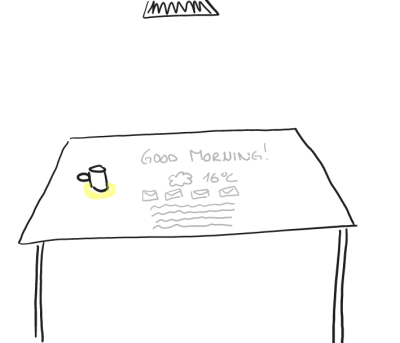Project: BMBF-Verbundprojekt VIGITIA - Vernetzte Intelligente Gegenstände durch, auf und um interaktive Tische im Alltag

In the joint project VIGITIA, the project partners are investigating how projected augmented reality (PAR) can support and enrich everyday interactions around tables.
Status: ongoing
Runtime: 2019 - 2022
Participants: Raphael Wimmer, Sarah Thanner, Florian Echtler, Vitus Maierhöfer
Keywords: augmented reality, projection mapping, projected AR
Funded by the German Federal Ministry of Education and Research (BMBF) as part of the research program "Bringing technology to people".
Project partners:
- University Regensburg (ZD.B Junior Research Group 'Physical-Digital Affordances')
In the joint project VIGITIA, the project partners are investigating how projected augmented reality (PAR) can support and enrich everyday interactions around tables.
In PAR, one or more cameras record the table surface and objects on it in real time. A projector mounted on the ceiling or on a swivel arm can thus project onto the tabletop or objects with millimeter precision and without distortion. This makes it possible to fade in additional information and interaction possibilities for the objects and to support analog work processes. Parallel to this, it is nevertheless possible to seamlessly integrate existing, intelligent objects such as smartphones, tablets or laptops into the system, for example, in order to exchange data between the devices via the projection as an intermediary or to offer a larger interaction surface for several people than the small smartphone screen allows. Here, the technology takes a back seat and instead the focus is on the shared experience, which is only supported by the technology if desired.
To read more about our participatory design approach and our cooperation with the creative and culture center DEGGINGER, click here.
Example scenario: Tom and the SmartProjectorLamp™
Tom is 34, and has a wife and three children. He is a househusband, an amateur musician and is involved in several social projects and associations.
The morning did not go well at all. In the morning, he forgot the eggs on the stove, child 1 spilled cocoa all over his exercise book. Child 2 missed the school bus, but the car key is nowhere to be found. Then Tom tries to wrap child 3's birthday present for a friend nicely. Despite all the helpful YouTube videos, all that has emerged is a shapeless lump.
A package arrives late in the morning. Inside: the long-awaited SmartProjectorLamp™. This is screwed into a normal lamp socket above the table. It integrates a daylight projector with multiple cameras that detect what's happening on the table below them. A small enclosed box - the battery-powered SensingMobileController™ - is taped under the tabletop. With a quick tap on the tabletop, Tom wakes up the devices. They automatically synchronize and calibrate, and after a few seconds the SmartProjectorLamp™ projects an interactive tour of the features of the now interactive table onto the tabletop.
After Tom finishes the tour, he decides to put his new old table to productive use right away. He superimposes a projected ruler on the table to help him cut the wrapping paper straight and to the right length. Now the birthday present looks much better.
When cooking lunch, the table supports him with superimposed timers. When Tom puts the sweet potatoes on the table, it automatically shows him preparation instructions.
Child 3 comes home. Tom moves it to wipe the table by starting a little game on it where you have to wipe away dirt monsters projected on the table. Next, another game on the table shows the positions of plates and cutlery and measures how quickly and accurately you set the table. Child 3 sets the table again several times in order to beat his own high score. Tom has to intervene so that everyone can finally eat.
After dinner, homework is done. Child 1 has forgotten the physics booklet at school - and the school assignment is due tomorrow. The mother of a schoolmate has sent the scanned pages via WhatsApp. Tom puts his smartphone on the table, which immediately recognizes it and displays the latest images on it as thumbnails next to it. Tom drags the relevant pictures to the center of the table, where they automatically arrange themselves into a stack. Child 1 can now flip through the virtual notebook on the table. A scanned worksheet must be printed out again. Tom displays the printer icon on the table and drags the image onto it.
Child 2 has a world map projected on the table to help him with his geography homework. Child 3 is fascinated by it and places Lego men in all the countries he would like to visit.
In the early evening, some neighbors still come by to discuss solutions for the ailing playground in the settlement. One of them has brought along a “Group Mirror” application on his tablet to support and guide discussions. Among other things, this shows next to each person at the table how long they have been talking. As a result, everyone can see that Tom is very much dominating the conversation at the moment. He decides to back off a bit and give the other participants more space to make their points. When everyone agrees, the plan is put in writing and a scan is made of the table, which is automatically sent to everyone present.
After the neighbors leave, Tom receives a call from Sebastian, a college friend who also owns a SmartProjectorLamp™. The two decide to play a board game together with their families: To do this, they both start telepresence mode on their tables, which virtually mirrors the objects on one tabletop to the other. Tom takes “Monopoly” out of the cupboard and places the game board on the table, which thereby appears simultaneously on Sebastian's table. Conversely, the game pieces of Sebastian's family now also appear as a projection on Tom's game board. A tablet placed on the side hooks into the system and also offers the possibility of talking directly via video stream. This allows the two families to enjoy a relaxed game evening without having to organize a babysitter at short notice.
After all the children have gone to bed, Tom and his wife sit together over a glass of wine. The SmartProjectorLamp™ bathes the table in a warm, dim light. Tom practices a few songs on his guitar. The songbook lying on the table is selectively lit brighter, and the chords to be played are highlighted in color.
At 11 p.m., Tom falls wearily into bed, reviewing the day. There was a lot going on today, but somehow everything was much more relaxed and fulfilling than usual. He thinks only briefly about the new SmartProjectorLamp™, because it never pushed itself to the fore, but was always there when he needed it.
Projects within VIGITIA
Use Cases and Application scenarios
Over the course of the last few years, as part of the VIGITIA project, we have collected a wide range of ideas for possible use cases and application scenarios for interactive tabletops.
Some of the ideas listed were already part of the VIGITIA scenario created in the initial phase of the project. The majority of the ideas presented, however, have been developed as part of a participatory design process accompanying the technological development of our prototypes from 2020 to 2022. Thus, they result from our engagement with a broader public in the course of pop-up science exhibitions, an idea workshop with creative professionals, as well as an online survey on table usage. In addition, we added ideas that came up in internal brainstorming sessions in the PDA research group.
Get in touch with our ideas here.
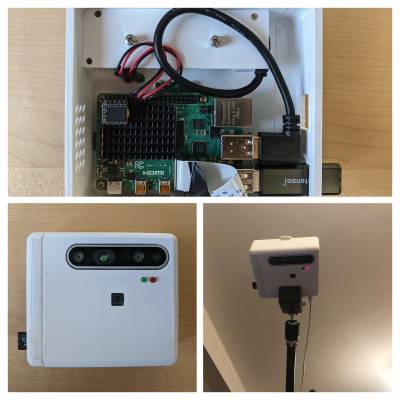
Project: BirdsEye: Capturing top-view images of tabletop usage
A toolkit for capturing and analyzing tabletop usage.
Status: ongoing
Runtime: 2020-05-01 -
Participants: Vitus Maierhöfer, Sarah Thanner, Raphael Wimmer
Keywords: BirdsEye, study, tables, everyday life
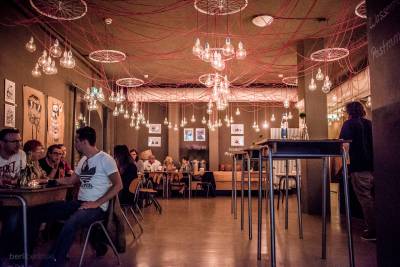
Project: Prototype deployment in the Degginger Cafe
Imagine you go out to eat and an “intelligent” table shows you the menu and informs you about the origin of the products. Or maybe it lets you bridge the waiting time for your meal with a little game. With our VIGITIA prototype we explore these and other ideas at the Degginger Cafe in Regensburg
Status: ongoing
Runtime: 2021-02-23 -
Participants: Vitus Maierhöfer, Sarah Thanner, Marie Laufkötter, Robert Bosek, Quirin Wittmann
Keywords: participatory design, degginger
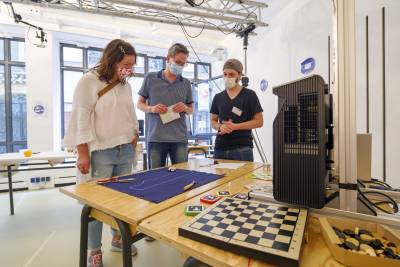
Project: Pop-Up Participatory Design facilitates Ideation, User Research, and Outreach
Pop-Up Participatory Design facilitates Ideation, User Research, and Outreach
Status: ongoing
Runtime: 2020-01-09 -
Participants: Sarah Thanner, Vitus Maierhoefer, Raphael Wimmer
Keywords: participatory design, science communication
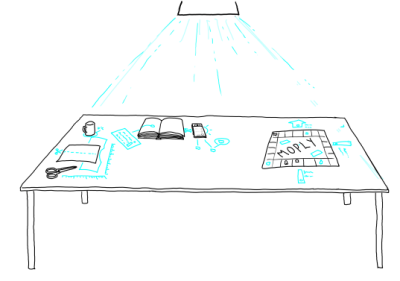
Project: Survey on table use in everyday life
Results of our survey on table use in everyday life (2020).
Status: finished
Runtime: 2020-06-04 - 2020-08-18
Participants: Sarah Thanner, Vitus Maierhoefer, Marie Sautmann, Philipp Huber, Clara Hilmer, Raphael Wimmer
Keywords: survey
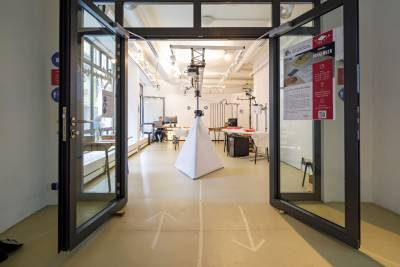
Project: Vigitia Meets Degginger 2.0 (September 2021)
From September 20 to 25, 2021, we presented three prototypes to an interested public at Regensburg's Degginger Cultural and Creative Center. The primary goals of the exhibition were to generate ideas for further application scenarios and use cases, user research, public relations and science communication.
Status: finished
Runtime: 2021-09-20 - 2021-09-25
Participants: Sarah Thanner, Vitus Maierhöfer, Jürgen Hahn, Marie Laufkötter, Clara Hilmer, Marie Sautmann, Raphael Wimmer
Keywords: participatory design, science communication, prototype deployment

Project: VIGITIA meets Degginger 3.0 (March 2022)
From March 15 to 19, 2021, we presented three prototypes to an interested public at Regensburg's Degginger Cultural and Creative Center. The primary goals of the exhibition were to generate ideas for further application scenarios and use cases, user research, public relations and science communication.
Status: finished
Runtime: 2022-03-15 - 2022-03-19
Participants: Sarah Thanner, Vitus Maierhöfer, Jürgen Hahn, Marie Laufkötter, , Raphael Wimmer, Carlotta Strimpfle, Tim Heimlich
Keywords: participatory design, science communication, prototype deployment

Project: Vigitia Meets Degginger (September 2020)
Public exhibition of first project results
Status: finished
Runtime: 2020-09-14 - 2020-09-19
Participants: Sarah Thanner, Vitus Maierhoefer, Philipp Huber, Julia Sageder, Raphael Wimmer
Keywords: degginger, participatory design
Publications

Raphael Wimmer, Florian Echtler
Proceedings of the Mensch und Computer 2019 Workshop on Virtual and Augmented Reality in Everyday Context (VARECo)

7th conference of the Section “Digitization in Everyday Life” of the German Association of Cultural Anthropology and Folklore Studies (dgv) on “Digital Truth-Making - Ethnographic Perspectives on Practices, Infrastructures and Affordances of Truth-Making in Digital Societies” at the Humboldt University of Berlin (Story Map)
Florian Echtler, Vitus Maierhöfer, Nicolai Brodersen Hansen, Raphael Wimmer
Companion Proceedings of the 2023 Conference on Interactive Surfaces and Spaces
News
Open Labs Day at MINT-Labs Regensburg (2022-07-15)
On 15.07.2022 we were represented with some demos at the Open Labs Day of the MINT-Labs Regensburg. (more...)
Visit by Minister-President Dr. Markus Söder (2022-05-05)
We presented current and upcoming research. (more...)
VIGITIA meets Degginger 3.0 - Recap (2022-03-31)
We are looking back on an exciting and insightful week of our pop-up science exhibition at the creative center Degginger. (more...)
VIGITIA meets Degginger 3.0 (2022-03-09)
The pop-up-science exhibition “VIGITIA meets Degginger” enters its third round. (more...)
Virtual Networking Meeting Human-Technology Interaction (2021-11-24)
The VIGITIA project presents its project progress at the networking meeting of the BMBF funding program “Human-Technology Interaction”. (more...)
VIGITIA meets Degginger 2.0 – Recap (2021-10-15)
We are looking back on an exciting and insightful week of our pop-up science exhibition at the creative center Degginger. (more...)
VIGITIA meets Degginger 2.0 (2021-09-16)
Hands-on research: The pop-up science exhibition “VIGITIA meets Degginger” enters its second round. (more...)
New results of the ongoing cooperation with Industrial Design Students from OTH Regensburg (2021-07-08)
The second semester of the VIGITIA projects ongoing collaboration brought forth new exiting ideas for use cases as well as interaction design. (more...)
Now online: Results report "Interactive tables in everyday life" (2021-05-04)
The results report of the pop-up science exhibition “Interactive Tables in Everyday Life - Vigitia meets Degginger” (September 2020) is now online. (more...)
Now online: Results report "Table use in everyday life" (2021-05-04)
The result report of the online survey “Table use in everyday life” (06.04.2020-18.08.2020) within the VIGITIA project is now online. (more...)
Cooperation with Industrial Design Students from OTH Regensburg (2021-03-22)
The results of the course “Pleasing Objects”, that was offered last winter semester as part of the Industrial Design programme at the faculty of architecture at OTH Regensburg in cooperation with VIGITIA, are now being presented on a website. (more...)
Kick-off: Cooperation with the Industrial Design students at OTH Regensburg (2020-12-03)
As part of the cooperation with the elective course “Pleasing Objects” in the Industrial Design program of the Faculty of Architecture at the OTH Regensburg, we had the pleasure to welcome fourteen students together with their lecturer Katharina Scheidig to the virtual demo show and to give an insight into the current status of the VIGITIA project. (more...)
VIGITIA meets Degginger - Recap (2020-10-21)
Review of a great and insightful week at the Degginger Creative Center. (more...)
VIGITIA: Table Survey Started (2020-06-04)
We started a survey to better understand how people work at tables. (more...)
VIGITIA: Workshop with Creative Professionals (2020-01-23)
The VIGITIA project presented its first prototype setup to creative professionals in the context of a workshop held at the center for creative culture Degginger in Regensburg. (more...)
VIGITIA Project Partner Meeting (2019-12-09)
The VIGITIA partners came together for a second project meeting to discuss the current status of the project and future work. (more...)
VIGITIA: Demo of first prototype (2019-10-15)
First prototype of the University of Regensburg with demo applications for the projection of cutting patterns and the “rewind” function. (more...)
My table - the interactive helper (2019-08-09)
Researchers at the University of Regensburg are developing interactive table surfaces to make everyday life easier. (more...)
Position paper "VIGITIA: Supporting everyday activities at tables through Projected AR" (2019-08-09)
We present the goals and methods of the VIGITIA project in a position paper. The paper will be presented at the VARECo workshop on September 8, 2019, as part of the Mensch und Computer 2019 conference. (more...)
VIGITIA: Kick-Off Meeting at University of Regensburg (2019-07-25)
On 25.07.2019, the VIGITIA partners gathered for a first joint meeting at the University of Regensburg. (more...)
